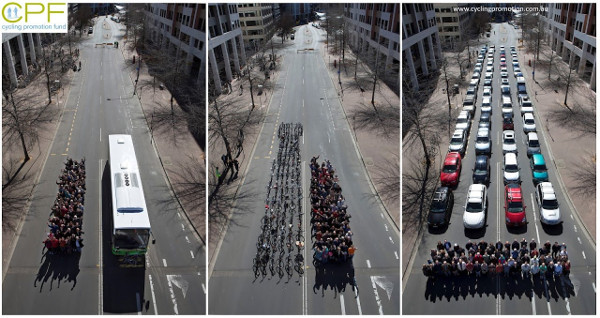Fight Climate Change, One Bus Ride at a Time

(Bloomberg) Success in the fight against climate change doesn’t demand dramatic innovations. Houses that heat themselves and jet planes fueled by sunshine and pond goo are good ideas, but there’s no need to wait for them. Power plants that emit only a steady drip of macchiato would be great, too, but they aren’t strictly essential.
Adequate if mundane solutions are already at hand. Many of them even make sense regardless of global warming. It’s just a matter of exploiting them. High on the list: public transit.
President Barack Obama’s strategy for fighting climate change centers on limiting carbon emission from power plants. Yet in the U.S., transportation accounts for almost as much greenhouse gas emissions as electricity generation -- and despite the federal government’s efforts to make cars more fuel-efficient, those emissions are increasing.

Electric cars may take care of that one day, but not soon: They make up less than 3 percent of all vehicles sold in the U.S., and their share of the market has been falling. Buses, subways and streetcars emit far less carbon. On a passenger-mile basis, driving a car with one occupant emits between two and four times as much as traveling by subway. A bus that’s three-quarters empty produces about 30 percent less emissions than the equivalent number of single-occupant cars, and half the emissions of the corresponding fleet of SUVs.
That matters because three in four U.S. commuters get to work by driving alone -- compared with 64 percent in 1980, when climate change wasn’t yet a concern. The share of commuters using transit hovers around 5 percent, less than half the share in 1960. Leaving cars at home is one of the simplest ways to reduce emissions, yet few of us do it. ...............(more)
http://www.bloomberg.com/view/articles/2016-05-11/fight-climate-change-one-bus-ride-at-a-time
MisterP
(23,730 posts)by emissions onboard vs. by the factories refilling their batteries; it really gets bad in commutes past 5-10 miles (themselves caused by half a century of car-only sprawl without regional integration by metro and accessible commuter rail)


cars/roads are all back-end costs, which make them politically and financially appealing since each person individually buys their vehicle: if people paid as much for transit as they did for roads via maintenance and their car mortgages there'd be a trolley, LRT, or subway every two blocks out to the exurbs
and even buses are gaspingly inadequate (in spite of the above pictures)--LA's Purple Line ends one-tenth of the way to any destination so everyone rides in speed and comfort--and then so everyone has to wait 10-20 minutes to pack themselves through one door into a standing-room vehicle that limps along at 8 mph
and these are articulated buses that come every 5 minutes and that's still not enough, so most people'd rather drive